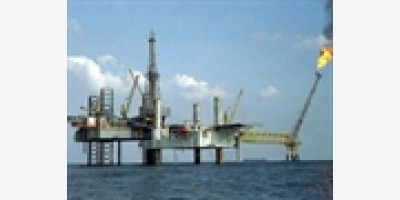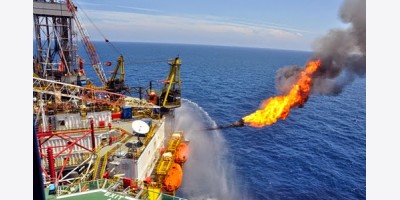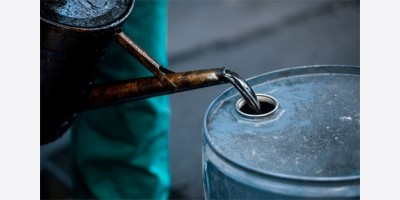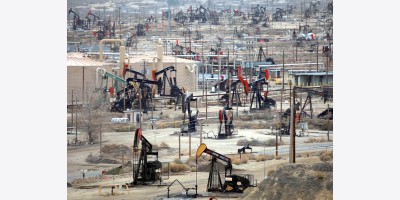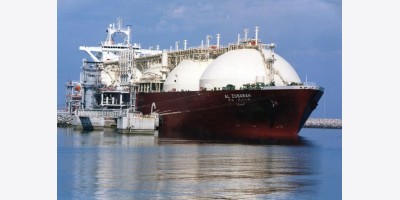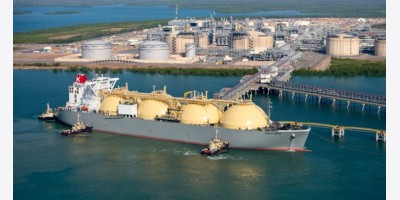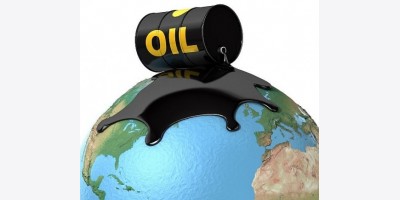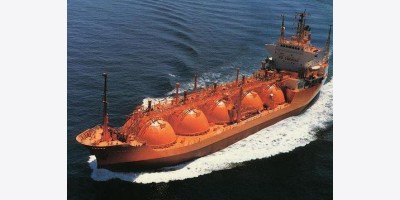Arthur Berman
Rig productivity and drilling efficiency are red herrings.
A red herring is something that takes attention away from a more important subject. Rig productivity and drilling efficiency distract from the truth that tight oil producers are losing money at low oil prices.
Pad drilling allows many wells to be drilled from the same location by a single rig. Rig productivity reflects the increased volume of oil and gas thus produced by each of a decreasing number of rigs. It does not account for the number of producing wells that continues to increase in all tight oil plays.
In other words, although the barrels produced per rig is increasing, the barrels per average producing well is decreasing (Figure 1).
Figure 1. Bakken oil production per rig vs. production per well.
Source: EIA, Drilling Info and Labyrinth Consulting Services, Inc.
(Click image to enlarge)
Rig productivity is a potentially deceptive measurement because it does not consider cost and apparently it always increases. It gives a best of all possible worlds outcome that seems to defy the laws of physics. Drilling productivity gives the false impression that as the rig count approaches zero, production approaches infinity.
Barrels per rig is interesting but the cost to produce a barrel of oil is what matters.
Similarly, drilling efficiency measures the decrease in the number of days to drill a certain number of feet. This is also interesting but, unless we know how it affects the cost to produce a barrel of oil, it is not useful.
The data contained in 10-Q and 10-K SEC forms provides a continuing view of a company’s financial position during the year. This allows us to determine a company’s cost per barrel and its components that rig productivity and drilling efficiency do not provide.
Pioneer, EOG and Continental SEC Filings for The First Half of 2015
First-half 2015 SEC filings for Pioneer, EOG* and Continental show that these companies are all losing money at an average realized crude oil price of $48 and range of $44-52 per barrel that includes hedges. I chose these companies to study because they have good positions in the best tight oil plays, and provide a weighted cross-section of Bakken, Eagle Ford and Permian production performance (Table 1).
Related: Can We Trust The Statistics The EU Gives Us On Renewable Energy Targets?

Table 1. Play representation of Pioneer Natural Resources Company, EOG Resources, Inc. and Continental Resources, Inc.
Source: Company SEC filings and Labyrinth Consulting Services, Inc.
(Click image to enlarge)
First, I looked at operating costs summarized in Table 2.

Table 2. Second quarter (Q2) and first half (H1) 2015 operating costs for Pioneer, EOG and Continental compared with the same periods in 2014.
Source: Company SEC filings and Labyrinth Consulting Services, Inc.
(Click image to enlarge)
Operating costs for Pioneer, EOG and Continental decreased by about 15%, 12% and 16%, respectively, in 2015 compared with 2014. This had nothing to do with rig productivity or drilling efficiency since those are capital costs; we are talking here about operating costs.
Decreases were because of reduced staffing costs, lower taxes because of lower oil prices and revenues, and generally lower costs of doing midstream business as service providers lowered their prices to remain competitive in a lower oil-price environment.
Next, I investigated how production rates changed in response to lower oil prices. Continental’s production increased 12% in 2015. Both Pioneer’s and EOG’s 2015 daily production rates, however, were flat compared with 2014 as these companies apparently exercised discipline in the face of lower prices (Table 3).

Table 3. 2015 vs. 2014 daily production rate comparison for Pioneer, EOG and Continental.
Source: Company SEC filings and Labyrinth Consulting Services, Inc.
(Click image to enlarge)
This is important because it means that capital expenditures by Pioneer and EOG in the first half of 2015 were to maintain rather than grow production.
Table 4 and Figure 2 summarize operating and maintenance capital costs for H1 2015 for these three companies along with their realized prices per barrel of oil equivalent (BOE) and calculated net margins per BOE. BOE prices represent a blend of crude oil ($44-52 per barrel), natural gas liquids ($15-16 per barrel) and natural gas ($2.45-2.53 per Mcf) prices.

Table 4. First half (H1) 2015 cost per barrel of oil equivalent summary for Pioneer, EOG and Continental.
Source: Company SEC filings and Labyrinth Consulting Services, Inc.
(Click image to enlarge)
Figure 2. First half (H1) 2015 cost per barrel of oil equivalent summary for Pioneer, EOG and Continental.
Source: Company SEC filings and Labyrinth Consulting Services, Inc.
(Click image to enlarge)
Even though Continental’s capital expenditures were for both maintenance and growth, I used 80% of its capex for a potential comparison with Pioneer’s and EOG’s full maintenance capital costs.
All three companies lost money on a unit basis for H1 2015. EOG lost the least at $9.74 per Boe (28% of its realized price). Pioneer lost $23.48 (75% if its realized price per Boe) and, Continental, $24.04 (69% of its realized price per Boe).
Any analyst or journalist who says that tight oil companies are doing fine at lower oil prices because of rig productivity, drilling efficiency or any other factor needs to look at the data. For less substantial and less well-positioned companies than the three in this study, the losses are probably far worse.
These observations are consistent with the trends in cash flow shown in Table 5.

Table 5. Cash flow summary for 2014 and 2015 for Pioneer, EOG and Continental.
Source: Company SEC filings and Labyrinth Consulting Services, Inc.
(Click image to enlarge)
All three companies had negative free cash flow in H1 2015. Pioneer out-spent cash flow by $781 million; EOG out-spent cash flow by $966 million; and, Continental out-spent cash flow by $1.1 billion.
Table 5 also reveals that EOG was cash-flow positive in 2014 before oil prices collapsed although Pioneer and Continental lost money even at higher oil prices. I wanted to compare EOG’s costs when the company was cash-flow positive to more recent costs when it was cash-flow negative (Table 6).

Table 6. EOG Resources’ 2015 vs. 2014 costs per barrel of oil equivalent.
Source: Company SEC filings and Labyrinth Consulting Services, Inc.
(Click image to enlarge)
I have already discussed the probable causes for lower operating costs but the 20% decrease in capital costs is significant and may be behind some of the claims that rig productivity and efficiency are important. I do not know what percentage of capex for 2014 was for growth vs. maintenance. My allocation of 85% of capex is, therefore, arbitrary but probably over-states the amount of capex savings between 2015 and 2014. It provides a net margin per BOE that is consistent with the positive cash flow for 2014 shown in Table 5, and with recent statements by the company that it would resume full drilling at around $60 per barrel oil prices.
One of my clients just drilled a well to more than 14,000 feet onshore Texas using a high-horse power top-drive rig designed for horizontal drilling. The day rate for the drilling rig decreased by almost 40% from the initial quote in the fall of 2014 to when the contract was signed in the spring of 2015.
This leads me to believe that most, if not all, of the recent capex savings by EOG and other tight oil producers is because of price deflation and not because of increases in rig productivity or efficiency.
The EIA Drilling Productivity Report
If we have learned anything watching the rig count fall since December 2014 without much corresponding fall in oil production, it is that rig count is a very poor predictor of anything except where capital is going. Drilling productivity is just another variant or derivative of rig count and comes burdened, therefore, with all of its vagaries.
At the same time, there are problems with how the EIA uses rig productivity in their monthly Drilling Productivity Report (DPR). EIA assumes a 2-month lag between well spud and first production for all unconventional plays but this is incorrect for the three most important tight oil plays.
Figure 3 shows that the average time from spud to first production for the Eagle Ford is at least 75 days; for the Bakken, 120 days; and, for the Permian “shale” plays, 90 days.
Figure 3. Data analysis for well spud to first production for the Bakken, Eagle Ford and Permian basin tight oil plays.
Source: Drilling Info and Labyrinth Consulting Services, Inc.
(Click image to enlarge)
There are additional problems with EIA’s DPR such as inclusion of considerable conventional oil production in the Permian basin, and with the broad definitions of play regions that include many wells and plays not relevant to the tight oil and shale gas plays of interest (EIA acknowledges these issues in its methodology explanation).
Conclusions
The best way to understand the details and changes in the cost of producing oil and gas is by evaluating data in 10-Q and 10-K SEC filings. Costs have declined since oil prices collapsed and hard times hit the industry. Most of this decrease in cost is part of a larger deflationary trend in commodities and currencies and not because of rig productivity and drilling efficiency as many believe.
To some extent, lower costs compensate for the lower price of oil but none of the tight oil companies evaluated in this study are profitable in the $44-52 per barrel range of reported realized oil prices. They are all losing money.
Rig productivity and drilling efficiency measurements do not account for declining average well productivity. They will only become useful if they can be related to the marginal cost of producing a barrel of oil. For now, they are distractions from the more important subject of tight oil profitability.
*I own EOG stock.
By Art Berman for Oilprice.com













